
I’ll start this article by telling you what Lodz is not. Lodz is not one of those postcard-pretty towns, cute and neat, where you suddenly feel transported back in medieval ages. Poland has plenty of those and this is not a criticism. Don’t get me wrong! I love them. But after visiting Rzeszow, Sandomierz, Zamosc, Lublin, Kazimierz Dolny, Gdansk, Torun and Poznan in just two weeks, I really felt the need for something different.
And this was Lodz, a breath of fresh air. It’s industrial, edgy, grim and quite modern. The main word that can describe Lodz is repurpose. Usually, I’m not a fan of alternative tours and districts. I didn’t fall for Praga district in Warsaw, even if I enjoyed their chocolate factory. But I liked Lodz. Back then it was just what we needed.
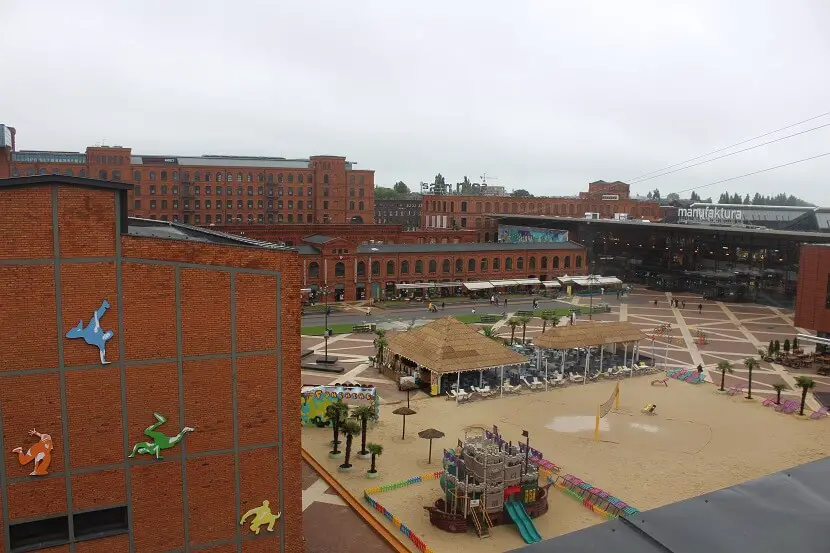
Where in Poland is Lodz?
Lodz, the third largest city in Poland, lies in the center of the country, a little over 100 km to the south-west of Warsaw and around 250 km from Krakow or Wroclaw. It has its own airport just 5 km away and is easy to reach by plane, train or car. Being so close to Warsaw, it can even be visited on a day trip, but this might feel a little too rushed.
Why is Lodz called Lodz?
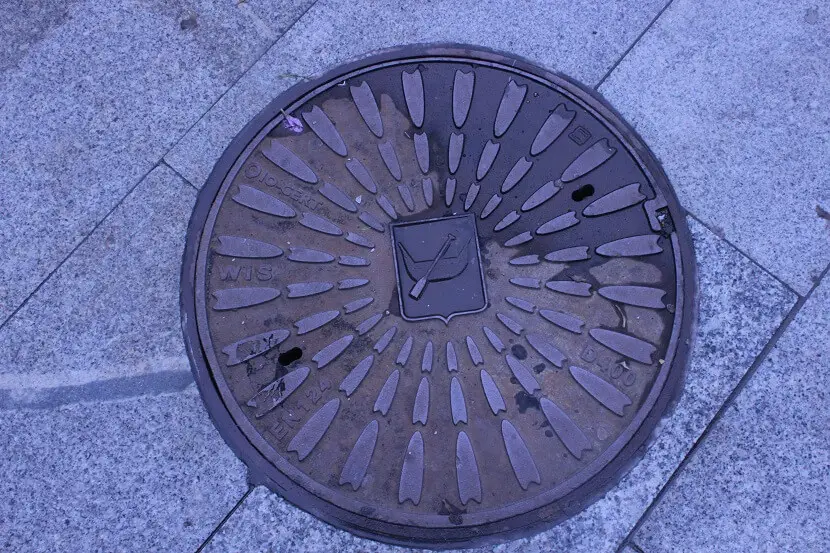
Telegraph named Łódź “the fairy tale city you can’t pronounce“. It might just be true. Those strange letters are read different than one might think. They should be pronounced “woodge”, like “woodshed” without “ed”. Łódź actually means boat, pretty strange as there’s no river around nowadays. However, in the underground there are some hidden rivers. But the name doesn’t come from them. Lodz owes is name to a family in the medieval ages, whose coat of arms had a boat on it.
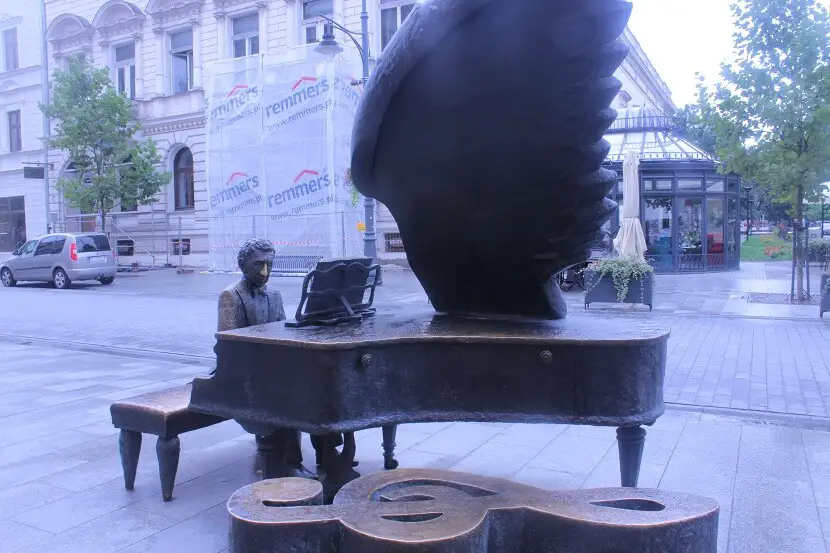
Short history
The city was set up in the 15th century. Over time it became the most important textile manufacturing hub in Europe, a “Polish Manchester”. But a lot of factories were owned by Jews. During the second World War they were closed into a ghetto and forced to work for the Germans, until they became too old or weak and were sent to concentration camps.
After the wars, in the post-industrial era, economical decline brought the city the nickname “Grey Lodz”. But during the last decades paint and imagination transformed it into a cool and creative city. Crumbling walls have been covered with bold colorful murals. Derelict factories and cotton mills were transformed into entertainment areas, with loft apartments, restaurants, pubs, shops and clubs.
Lodz is also the birth place of Polish cinematography. Famous directors as Roman Polanski and Andrzej Wajda were schooled here. Wajda even directed a film about the textile industry in Lodz.
What can you do and see in Lodz?
Walk along Piotrkowska Street, the longest street in Poland
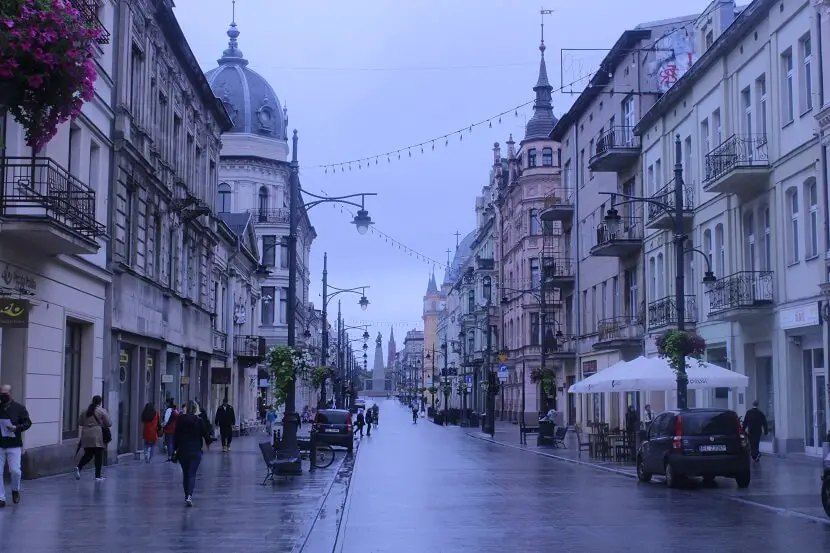
Piotrkowska, at its 4.2 km, is the longest commercial street in Poland. It extends from Liberty Square (Plac Wolnosci) to Independence Square (Plac Niepodleglości). It might seem long, as most of the street is pedestrian and can’t be crossed in a car. However, time passes by quickly with all those faded pastel colored buildings and the surprises on the way.
Along it can be seen some of the art nouveau and neo-baroque palaces and villas of wealthy industrialists from the 19th century. Today the grandiose townhouses host cozy cafes, boutique shops, hotels and restaurants. The childhood home of Polish-American classical pianist Arthur Rubinstein stands at no.78.
Like I wrote above, there are several surprises along Piotrkowska that we’ll keep you busy:
Rosa’s Passage
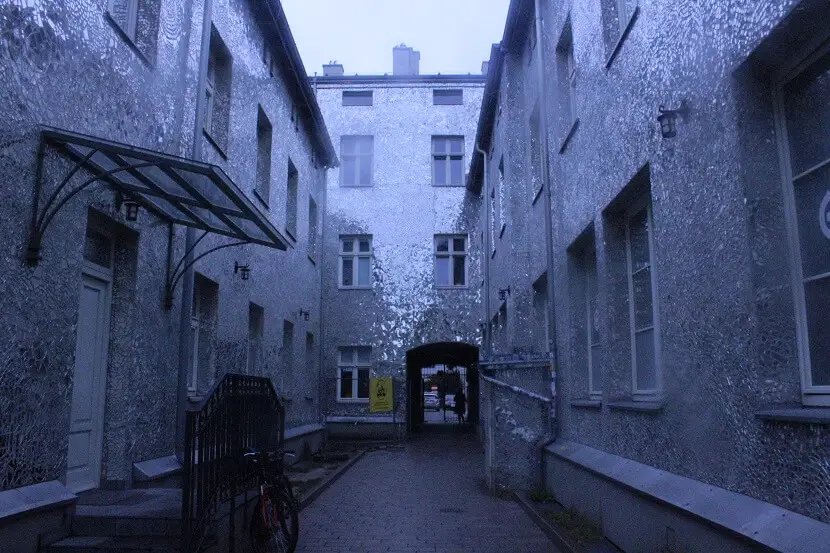
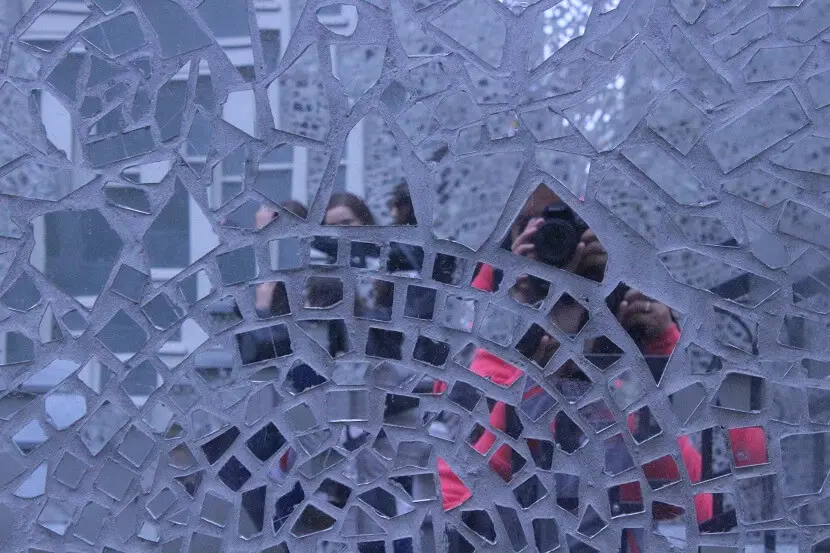
This is probably the most known landmark in Lodz. It reflects the transformation it has gone through in recent years. The passage used to be dark and gloomy until Polish artist Joanna Rajkowska completely clad the walls in tiny pieces of mirror and put together a huge stunning mosaic. She got the inspiration from her daughter, Rosa, that had eye cancer. After treatment, she gradually recovered her sight. Some of the fragments are even shaped like roses. This is on the first alley you’ll find if you start walking Piotrkowska from Liberty Square, at no. 3.
Statues of the famous Poles connected to Lodz
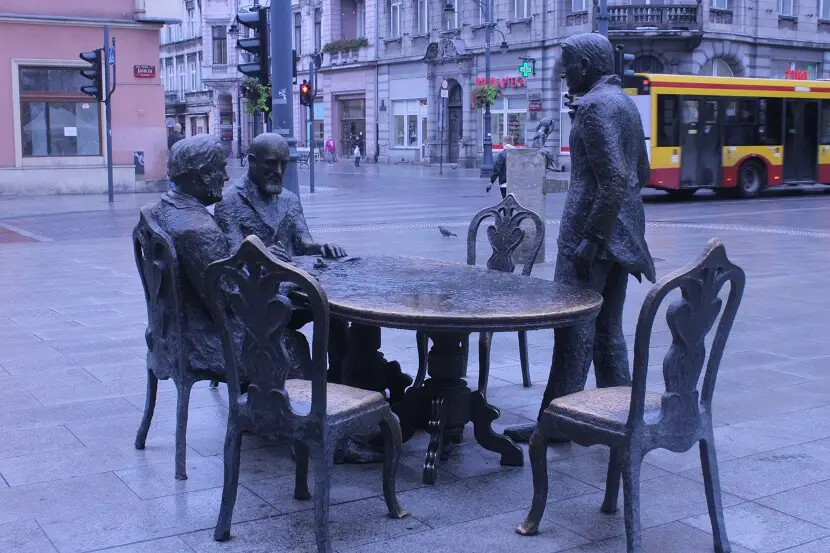
Dotted along the main street are statues of famous citizens in the history of Lodz. One of them represents Julian Tuwim, author of children poems. He stands on a bank and has his nose polished by the hands of the many students that rub it before exams for good luck. The three kings of the textile industry of Lodz, factory owners Izrael Poznański, Henryk Grohman and Karol Scheibler are gathered around a table. Writer Władysław Reymont, author of the novel “The Promised Land” is also there. In the book he depicts the industrial city and the challenges faced in setting up a factory two centuries ago. In front of his childhood house, Arthur Rubinstein plays a grand piano.
Holly-Lodz walk of fame – between Moniuszki Street and Rubinsteina Passage
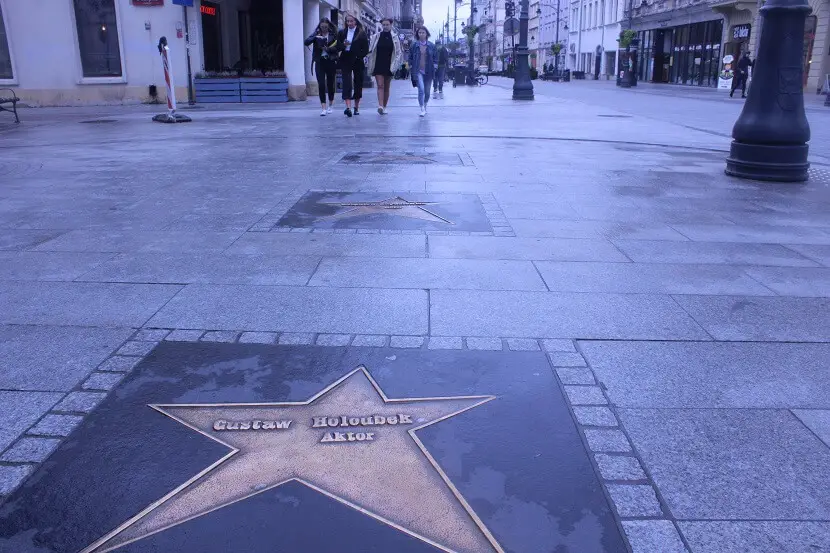
This makes more sense if you remember how the name of the city is read, (Holly)Woodge. As Lodz is the capital of cinema in Poland, it has its own version of the Hollywood Walk of Fame, with the country’s most famous stars, Roman Polanski, Arthur Rubinstein, Jerzy Hoffman and many more. Lodz earned its place in the UNESCO Creative Cities Network as a City of Film. It’s not unexpected if more stars will appear.
Spot the bold colorful murals
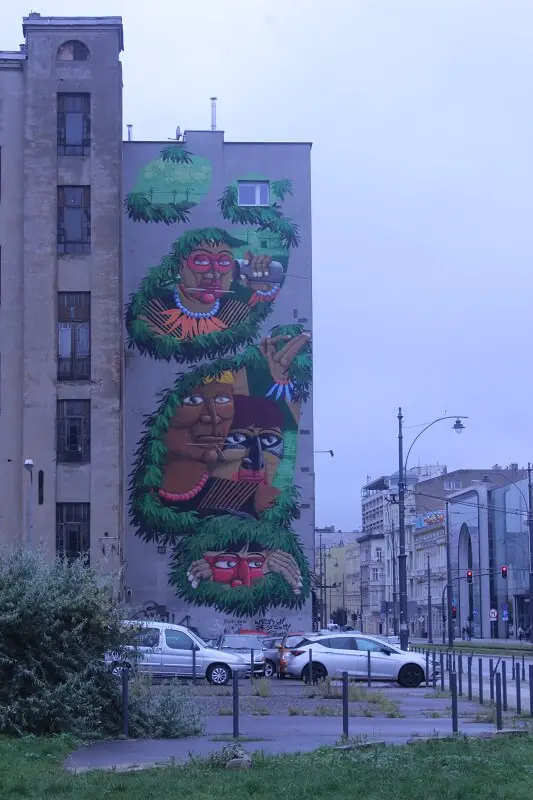
Eye-catching murals are scattered around Lodz. The Urban Forms Project started in 2009 with the mission to reinvigorate the post-industrial landscape of “gray Lodz”. Around 40 murals transformed the gloomy buildings into pieces of urban art. Painters from around the world were invited to participate and there are plans to add more of them.
The city comes to live with playful weasels, a blue flying elephant, flying birds or a funny image of Arthur Rubenstein. Looking for them is one of the most entertaining things you can do in Lodz. At the junction of Piotrkowska with Pilsudskiego, you’ll see the largest of the murals, an image of significant places in Lodz and a wooden sailboat.
Visit Manufaktura
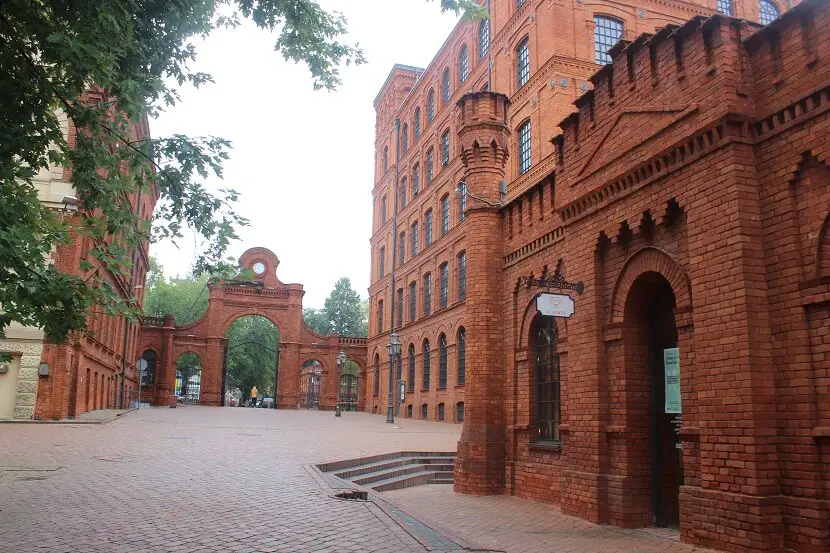
This is for all the fashionistas out there. Now you can combine shopping and history at Manufaktura. The red-brick buildings of the former 19th century estate of textile magnate Izrael Poznanski have been transformed into a huge mall and leisure complex.
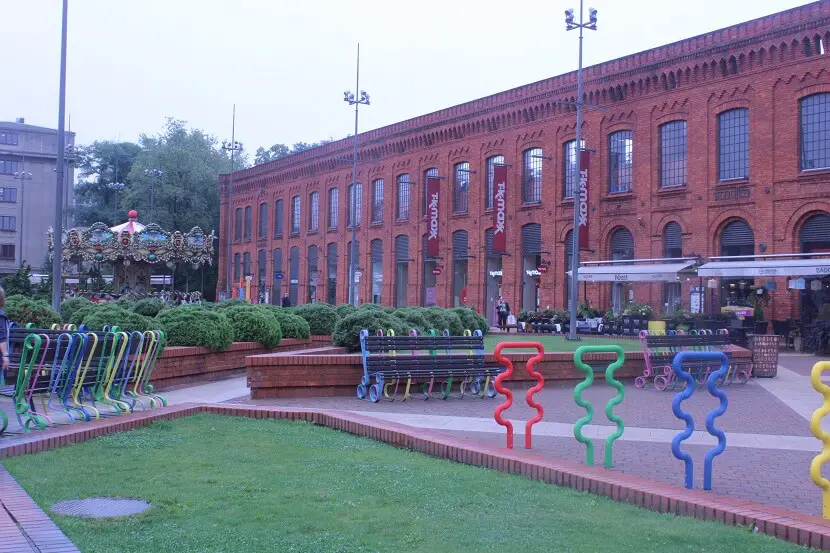
Inside it, there are more than 250 shops, restaurants, a cinema, theatres, beauty saloons, a fitness center, a bowling alley, a laser game center, a modern art gallery (MS2) and The Museum of Poznanski Textile Factory. Everyone can find something to enjoy. It’s the masterpiece of the city’s regeneration.
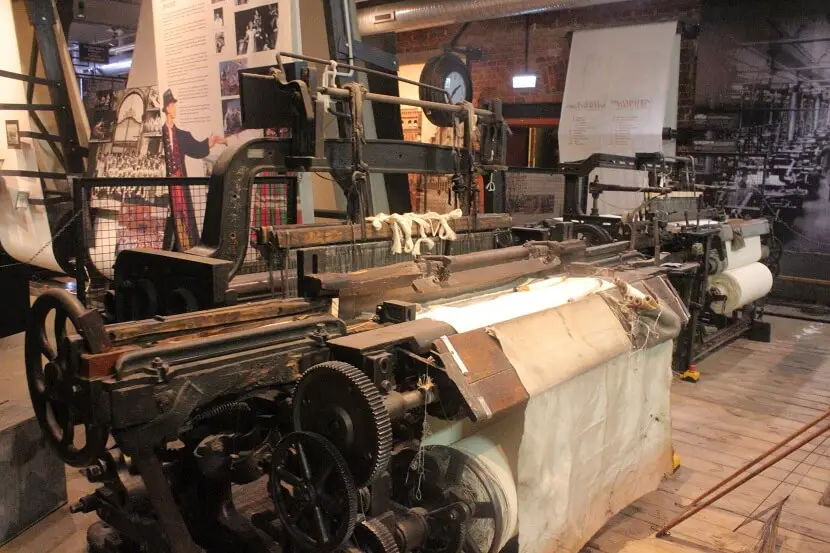
The Museum of the Factory shows the everyday life of the workers, but also aspects related to cloth production, techniques, machines and materials involved. It’s a great place to learn more about the history of the city and one of its most representative businessman, Izmail Poznanski. You can also buy a combined ticket and visit the rooftop for a bird’s eye view over the entire Manufaktura site.
Discover the Museum of the City of Lodz
Across the street stands the grand Palace of Izrael Poznanski, now the Museum of the City of Lodz. Izrael Poznanski was the rich owner of the textile factory. Initially, we didn’t plan to visit the museum inside the old factory, but this one. Unfortunately, it was closed.
The main exhibition presents the history of the city and the three communities that shaped it, Jews, Germans and Poles. A few rooms are dedicated to Arthur Rubinstein and his music. One can also visit Poznanski’s private study and the Art Nouveau interiors. Taking into consideration that the entrepreneur even considered to floor his palace with gold coins, it’s probably worth a look.
Grab something to eat or a margarita at Off-Piotrkowska
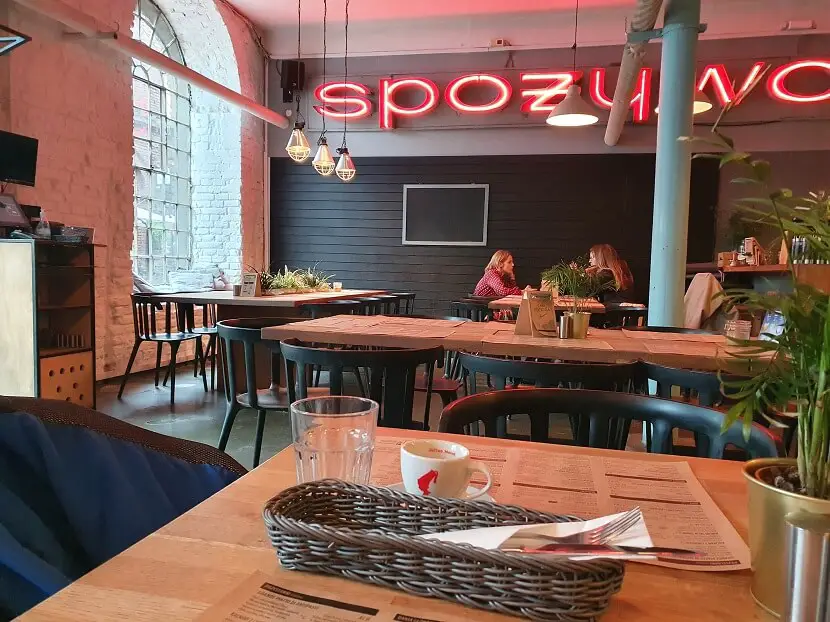
Just off Pietrowska Street lies another symbol of the reinventing of the city, Off-Piotrowska. The grounds of an old cotton mill have been transformed into trendy spots for having lunch or cocktails and boutique shops. While Manufaktura is a complex of chain stores, Off-Pietrowska encourages independent and local businesses.
Checkout the colorful Alexander Nevsky Cathedral
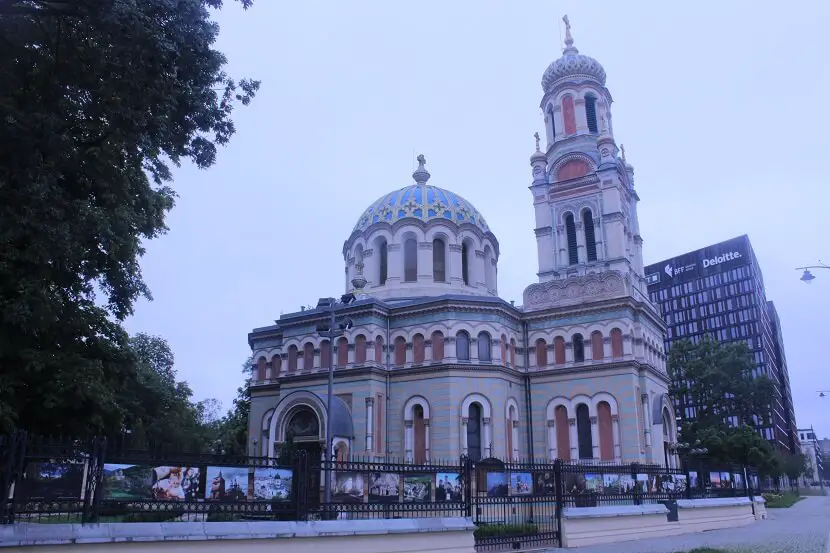
The colorful little orthodox church was built when Poland was a part of the Russian Empire. It commemorates the miraculous survival of Alexander II after an assassination attempt in 1879. It was funded by Karl Scheibler, Izrael Poznanski and Luliusz Kunitzer, rich factory owners at that time. None of them was orthodox.
Visit the Museum of cinematography
This is the second museum in Lodz we would have liked to visit and unfortunately was closed. It’s the only museum in Poland dedicated to cinematography. The collection includes cameras, projectors, a photo-plasticon and more. The building that hosts the museum is the palace of a former textile industrialist, Karol Scheibler.
Learn by playing at EC1
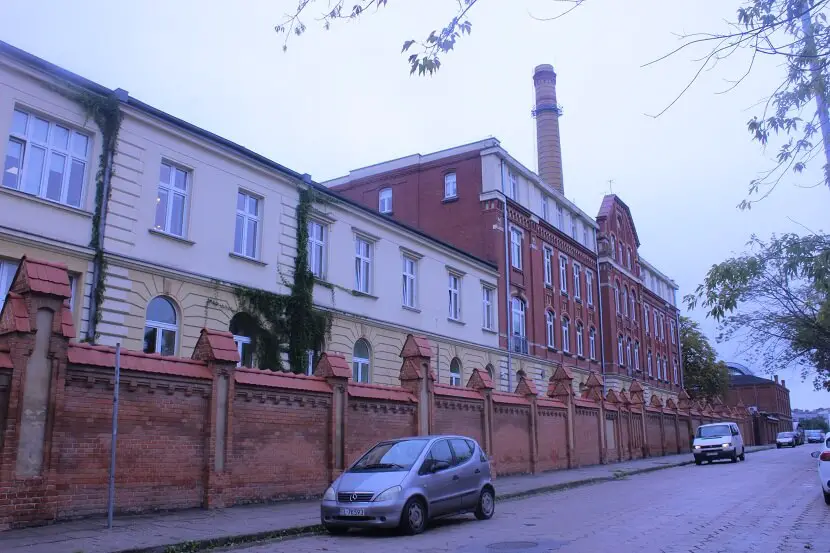
EC1 is the Center of Technology and Science in Lodz set in a former power and heat plant. There you can play and learn a lot of things about the history of the site and how things work. In one of the buildings is the most modern Planetarium in Poland.
Jewish Cemetery and Train Station
Jews were one of the main communities that determined the economy and life of Lodz. As such, WWII hit Lodz hard. Even if I didn’t visit neither the cemetery, nor the train station, an article about Lodz without mentioning them would be incomplete.
Why we didn’t visit? We’ve visited a lot of sites related to WW2, ghettos and concentration camps, including Auschwitz, Majdanek and Schindler’s factory. At that moment we simply didn’t want to see more places that inflicted so much pain and suffering.
The Jewish Cemetery in Lodz is one of the biggest in the world, with more than 200000 graves. This is also where the King of Textile, Izrael Poznanski, was buried. As you could notice from this palace, he liked to make an impression. He does it even after death, having the biggest Jewish tombstone in the world.
On the other hand, 43000 victims that perished in the neighboring ghetto are buried in a mass grave. Empty open graves dug by the remaining few hundreds Jews of the ghetto are still kept. They were forced to dig their own graves, but the Nazi’s didn’t have the time to execute them. The ghetto and the former Radegast Train Station are now museums that you can visit.
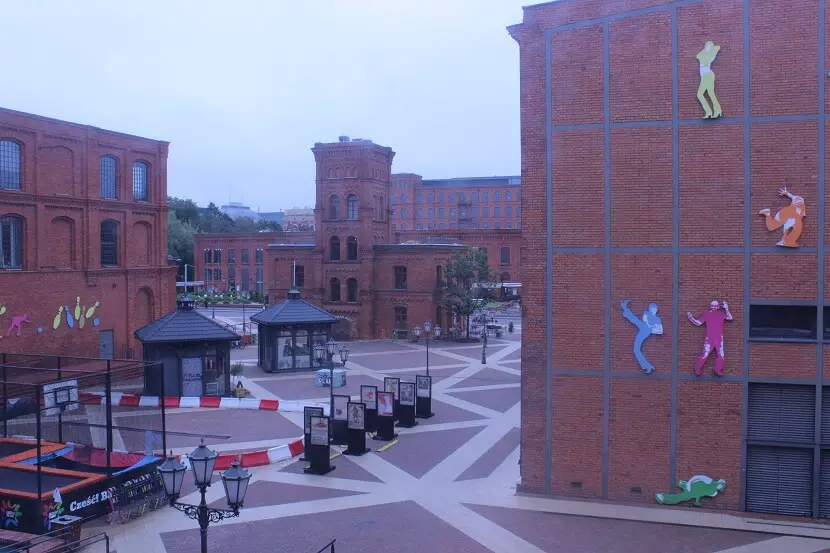
Where to stay in Lodz?
We’ve stayed in our RV in the Manufaktura parking lot, as we visited the city on a road trip through Poland. However, I saw some interesting options that I think are worth checking out.
One of them is Tobaco Hotel, a stylish hotel set up in a former wool mill that was later converted into a tobacco and cigarette factory. As everywhere in Lodz, the hotel is proud of its history and has several remembrances of it on display.
Another interesting option that I found is Stare Kino Cinema Residence. This hotel is located in one of the 19th century buildings on Pietrowska street. Its decor is inspired from movies, an association with the strong film industry in the city. Half of the rooms are inspired by Polish movies and half by international ones. We stayed in a similar hotel in Bologna and we both loved it.
A more luxurious option, but still strongly connected to the identity of the city, is the four stars hotel Vienna House Andel’s Łódź in one of the buildings of the former Poznanski factory, next to Manufaktura complex. It even has a rooftop pool in a glass box above the plaza.
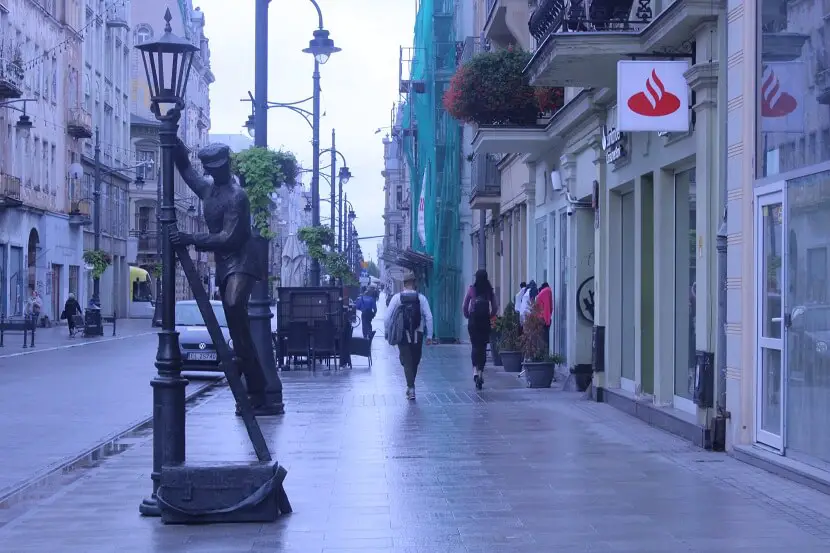
Where to eat in Lodz?
Lodz was the only town in Poland where I couldn’t have imagined eating traditional food. Instead of this, we went right into a chic burger pub in Off-Piotrkowska. We tried the Polish modern version of a hamburger with chips and it was quite good. You have more international options to choose from there. The cool lunch spots had mostly local clients, which is always a good thing.
My conclusion about Lodz
Lodz mixes some beautiful palaces left from its period of glory as a textile industry center with modern art and innovation. It’s fascinating how the city reinvents itself, how it transforms old crumbling buildings into complexes that serve the modern society. Lodz is proud of its history and identity and you can see this at every corner. Yes, it’s a lot different from the other picture-perfect cities that tourists choose to visit while in Poland, but this is fine. Uniqueness is exactly what makes it interesting.
What do you think about Lodz? Would you consider visiting?
Did you like Lodz? Pin it to your bucket list!

Travel With A Spin contains affiliate links. If you make a purchase through these links, I will earn a commission at no extra cost to you. Thanks for reading!

Really interesting and well written article
Thank you